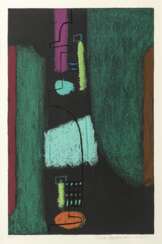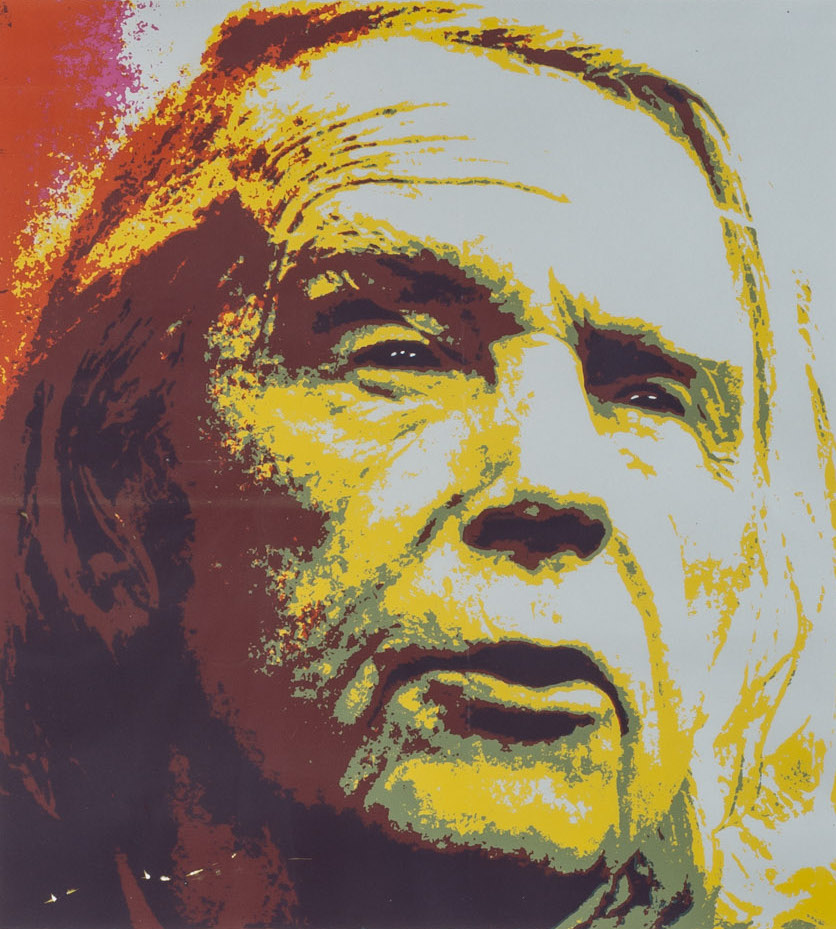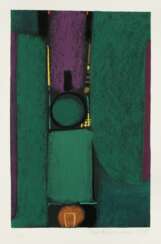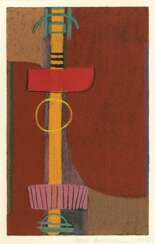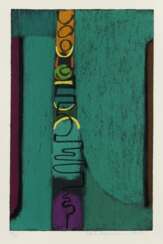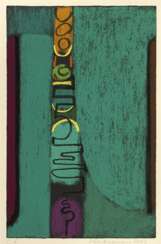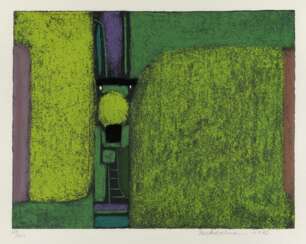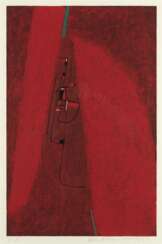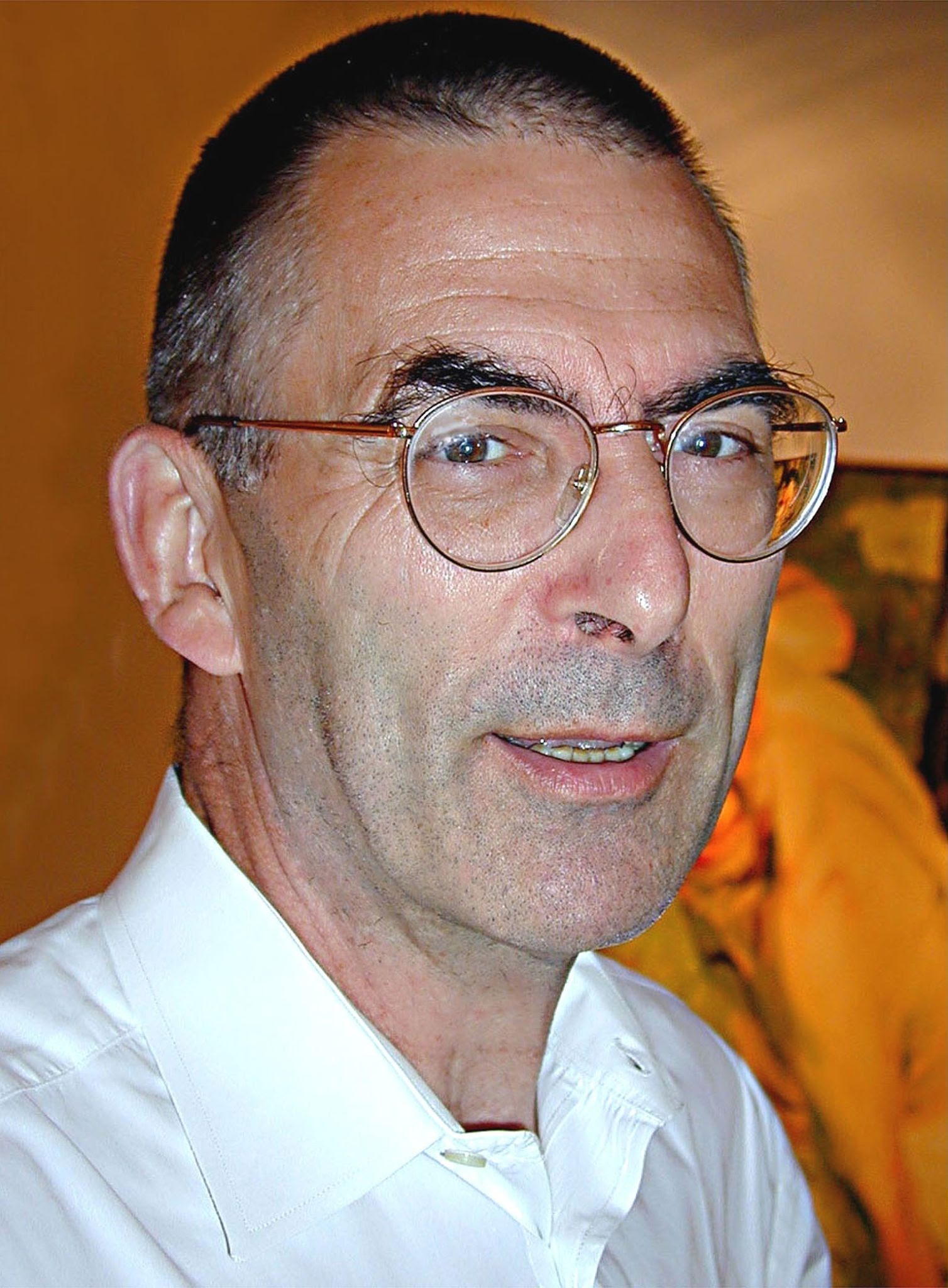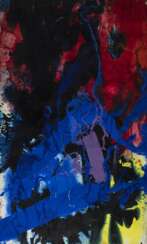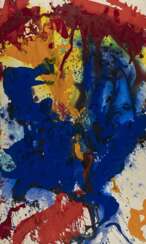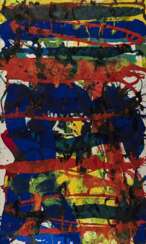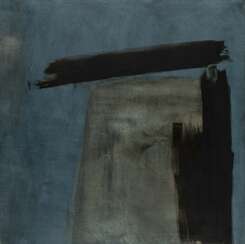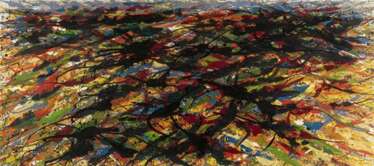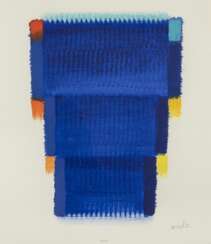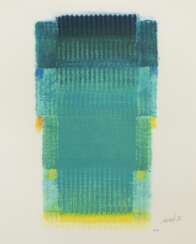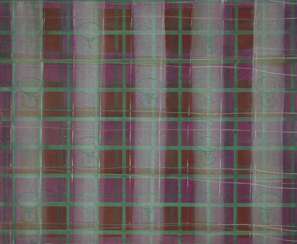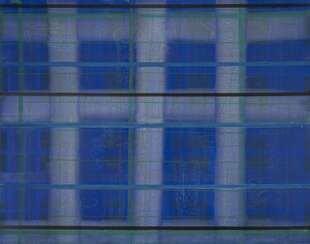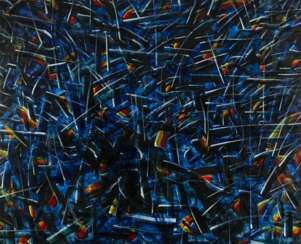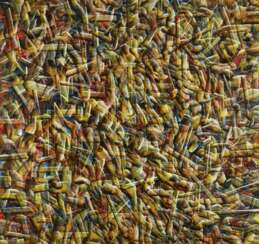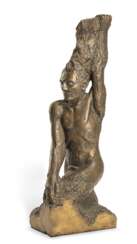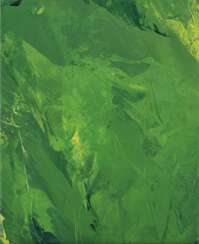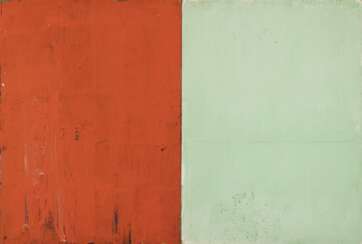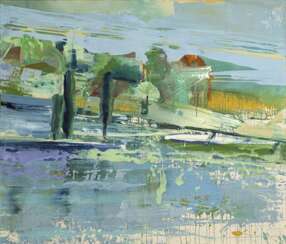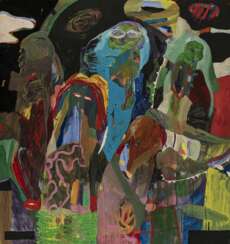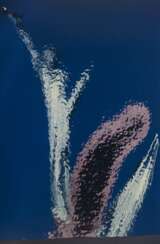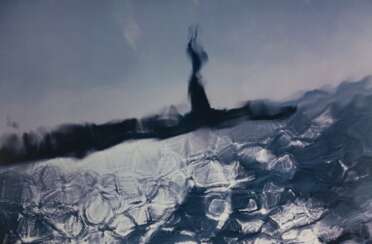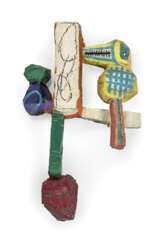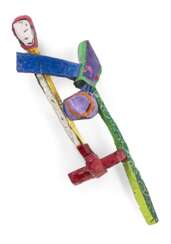
Modern & contemporary art, design
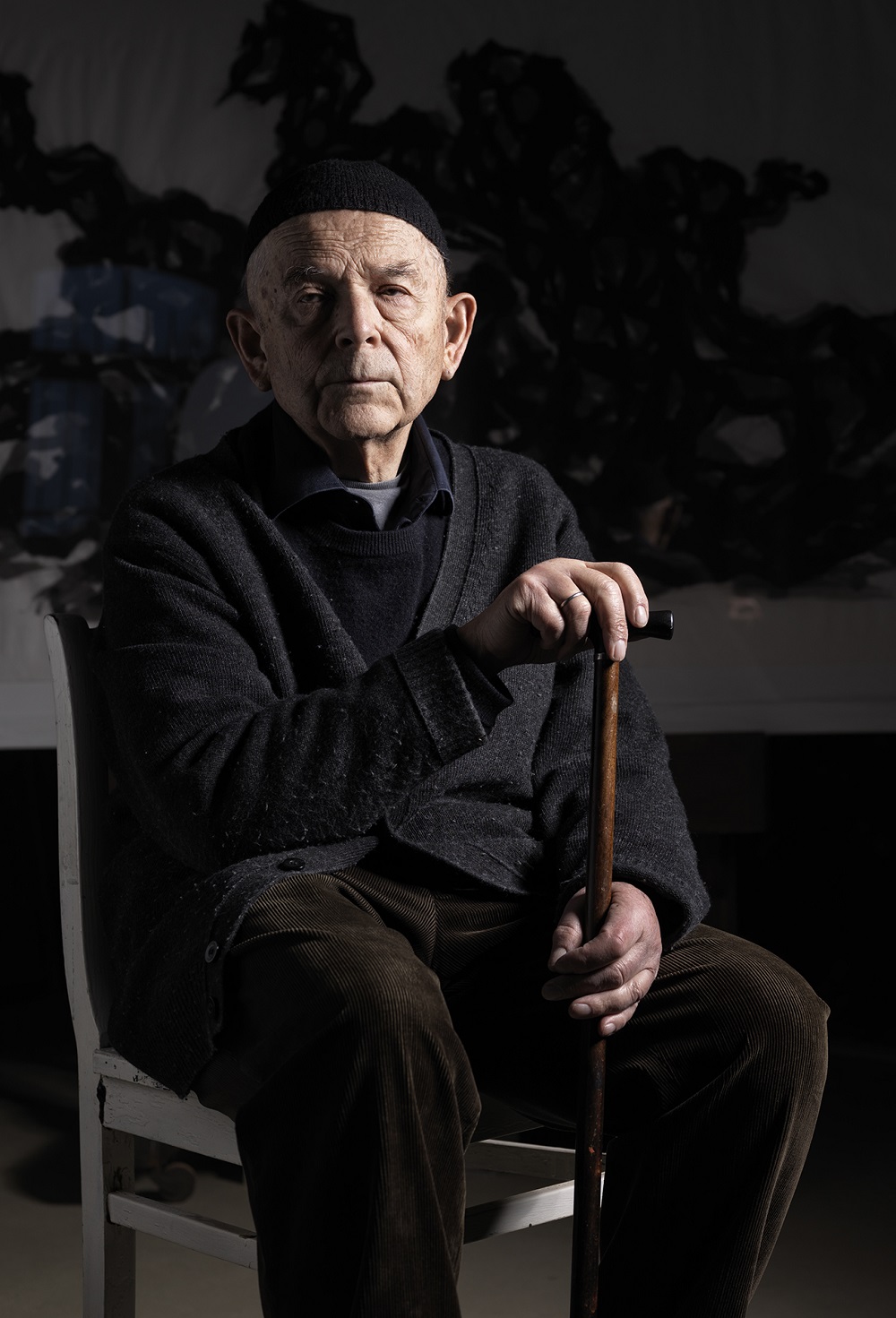
Max Uhlig is a German painter. He won the Hans Theo Richter-Preis of the Sächsische Akademie der Künste in 1998.
In 1978, Max Uhlig presented his characteristic paintings for the first time in the Dresden Kupferstichkabinett.
"Black and white or in colour, lines in the expressive rhythm of their superimposition draw the image mode and the conciseness of an extensive, unmistakable work that is a discovery. Today Max Uhlig is one of the last representatives of the era of open-air painting in modern art that began 150 years ago, but his work elevates it to the height of our time." His late work received significant impulses from annual stays in Faucon (southern France) from 1991 to 2010.
Max Uhlig has been a member of the German Association of Artists since 1990 and a founding member of the Saxon Academy of the Arts. From 1995 to 2002, he was the professor for painting and graphics at the University of Fine Arts in Dresden.

Heinz Mack is a German artist. Together with Otto Piene he founded the ZERO movement in 1957. He exhibited works at documenta in 1964 and 1977 and he represented Germany at the 1970 Venice Biennale. He is best known for his contributions to op art, light art and kinetic art.

Heinz Mack is a German artist. Together with Otto Piene he founded the ZERO movement in 1957. He exhibited works at documenta in 1964 and 1977 and he represented Germany at the 1970 Venice Biennale. He is best known for his contributions to op art, light art and kinetic art.
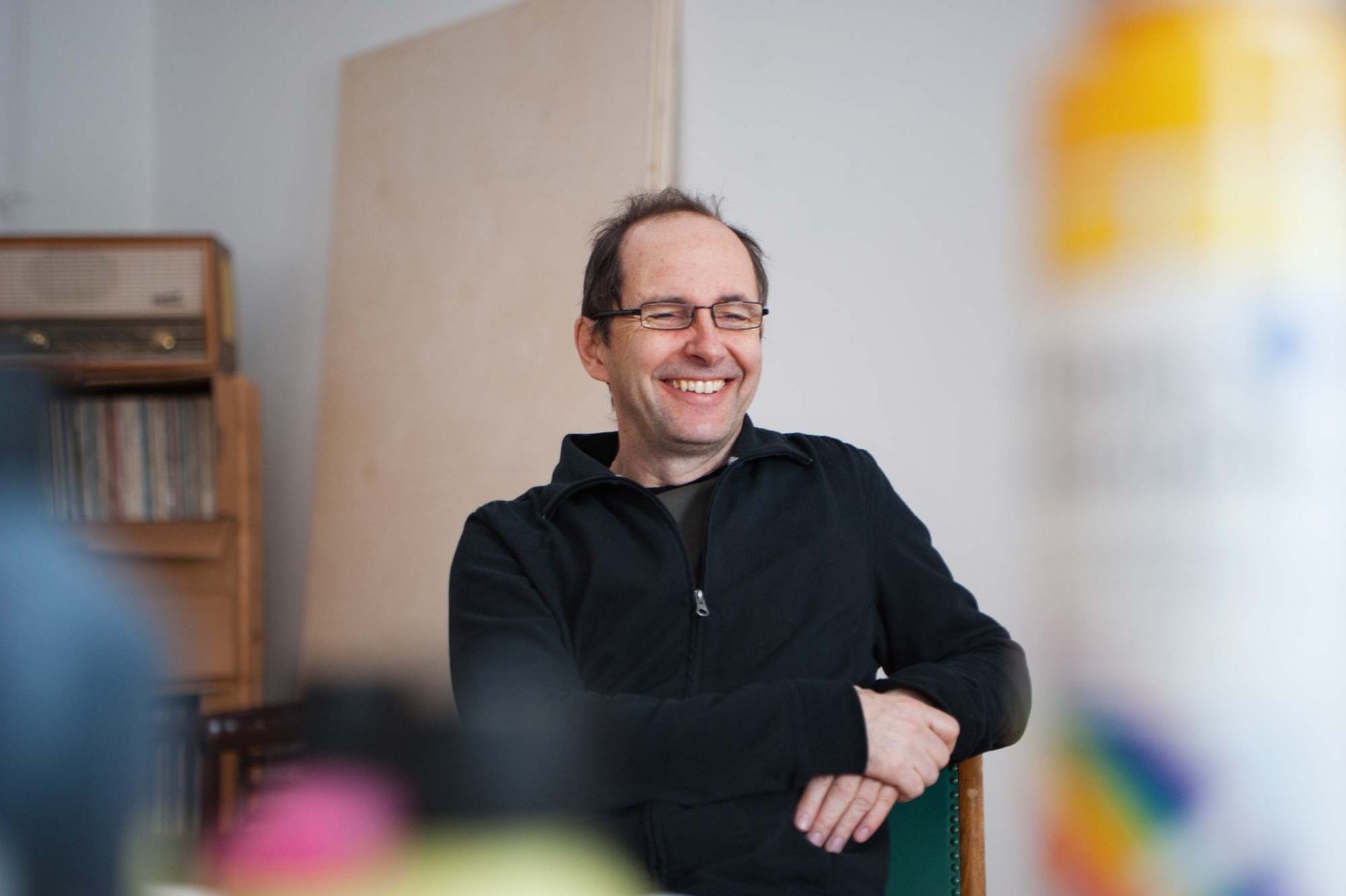
Thomas Heger is a German abstractionist painter living and working in Stuttgart.
Thomas Heger studied at the Stuttgart State Art Academy, and from 2006 to 2012 he taught at the Halle Graduate School of Art, Burg Giebichenstein.
Thomas Heger's painting is on the border of reality and abstraction, the artist is very interested in what seems incompatible, in what contrasts. First of all, in the paintings of Thomas Heger play a role things, objects, glass vessels, richly decorated crystal vases or simple glasses are located in free, clearly delineated color spaces. In a seeming weightlessness, the objects dance and float in the pictorial space. In his recent works, Thomas Heger also places human figures reduced to miniatures in his pictorial worlds.

Thomas Heger is a German abstractionist painter living and working in Stuttgart.
Thomas Heger studied at the Stuttgart State Art Academy, and from 2006 to 2012 he taught at the Halle Graduate School of Art, Burg Giebichenstein.
Thomas Heger's painting is on the border of reality and abstraction, the artist is very interested in what seems incompatible, in what contrasts. First of all, in the paintings of Thomas Heger play a role things, objects, glass vessels, richly decorated crystal vases or simple glasses are located in free, clearly delineated color spaces. In a seeming weightlessness, the objects dance and float in the pictorial space. In his recent works, Thomas Heger also places human figures reduced to miniatures in his pictorial worlds.

Thomas Heger is a German abstractionist painter living and working in Stuttgart.
Thomas Heger studied at the Stuttgart State Art Academy, and from 2006 to 2012 he taught at the Halle Graduate School of Art, Burg Giebichenstein.
Thomas Heger's painting is on the border of reality and abstraction, the artist is very interested in what seems incompatible, in what contrasts. First of all, in the paintings of Thomas Heger play a role things, objects, glass vessels, richly decorated crystal vases or simple glasses are located in free, clearly delineated color spaces. In a seeming weightlessness, the objects dance and float in the pictorial space. In his recent works, Thomas Heger also places human figures reduced to miniatures in his pictorial worlds.
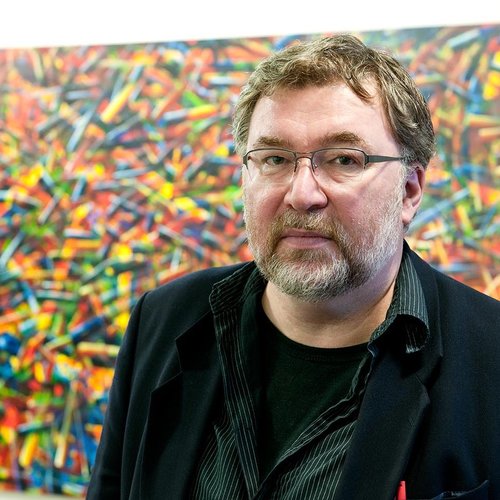
Petr Hrbek is a German artist of Czech origin, who lived and worked in Germany.
Petr Hrbek emigrated with his family to the Federal Republic of Germany as a teenager and studied at a free art school and at the Stuttgart State Academy of Fine Arts. In 1997 he opened his studio in Berlin and participated in many exhibitions in Germany and the Czech Republic.

Petr Hrbek is a German artist of Czech origin, who lived and worked in Germany.
Petr Hrbek emigrated with his family to the Federal Republic of Germany as a teenager and studied at a free art school and at the Stuttgart State Academy of Fine Arts. In 1997 he opened his studio in Berlin and participated in many exhibitions in Germany and the Czech Republic.
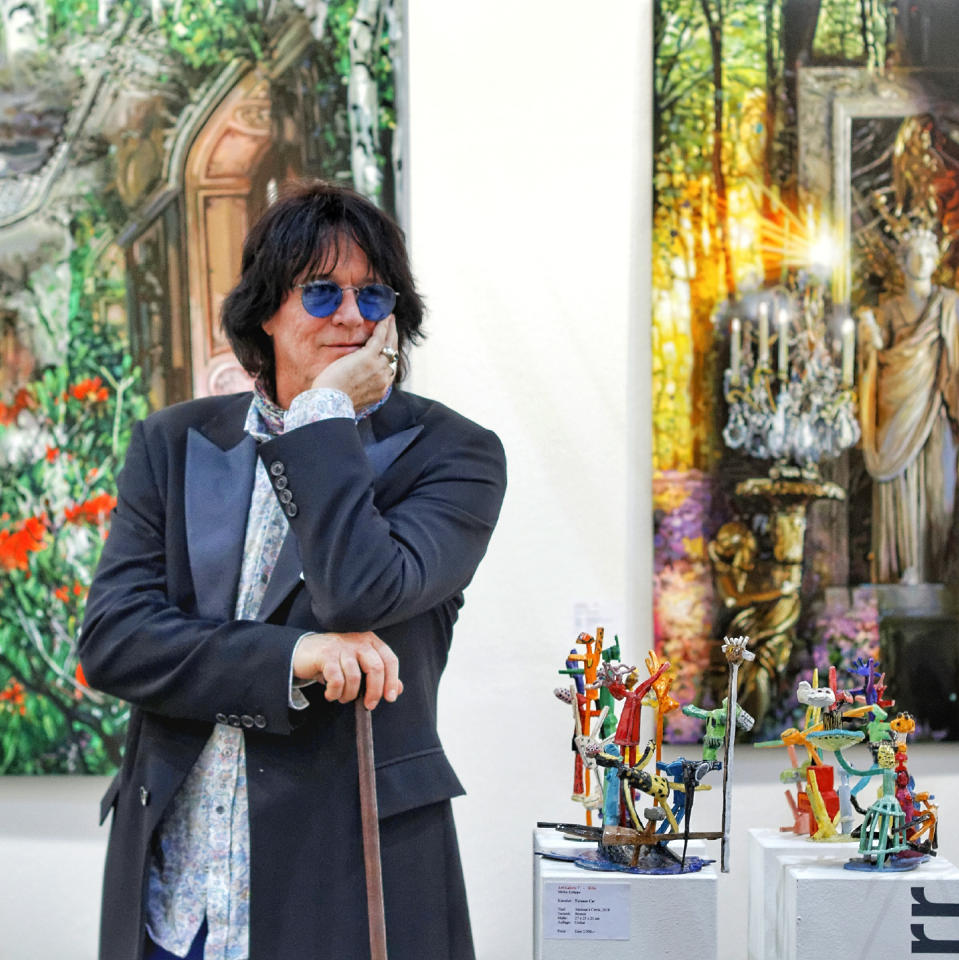
Terence Carr is a German painter and sculptor originally from Kenya.
Terence Carr, whose family emigrated to Africa from Ireland, was born in Nairobi, Kenya, where he spent the first 19 years of his life. In 1971, he traveled to England, where he became an officer in the British Army and then served in Germany. After gaining life experience, Carr enrolled at Augsburg University to study art education.
There is always an African influence in Carr's wooden sculptures, his peculiar language of forms. The artist hardly makes any sketches and immediately works directly on the wood with a chainsaw. Terence Carr uses constantly recurring symbols that reflect opposites - good and evil, love and hate, war and peace, pain, fear, suffering, tolerance and humanity. Animals with human features and people who look animal-like. Overall, it touches on the root issues of being human.
Over time, Terence Carr has become one of the most famous artists in the world. His works can be seen at exhibitions in different parts of the world and are represented in many significant collections.

Terence Carr is a German painter and sculptor originally from Kenya.
Terence Carr, whose family emigrated to Africa from Ireland, was born in Nairobi, Kenya, where he spent the first 19 years of his life. In 1971, he traveled to England, where he became an officer in the British Army and then served in Germany. After gaining life experience, Carr enrolled at Augsburg University to study art education.
There is always an African influence in Carr's wooden sculptures, his peculiar language of forms. The artist hardly makes any sketches and immediately works directly on the wood with a chainsaw. Terence Carr uses constantly recurring symbols that reflect opposites - good and evil, love and hate, war and peace, pain, fear, suffering, tolerance and humanity. Animals with human features and people who look animal-like. Overall, it touches on the root issues of being human.
Over time, Terence Carr has become one of the most famous artists in the world. His works can be seen at exhibitions in different parts of the world and are represented in many significant collections.
